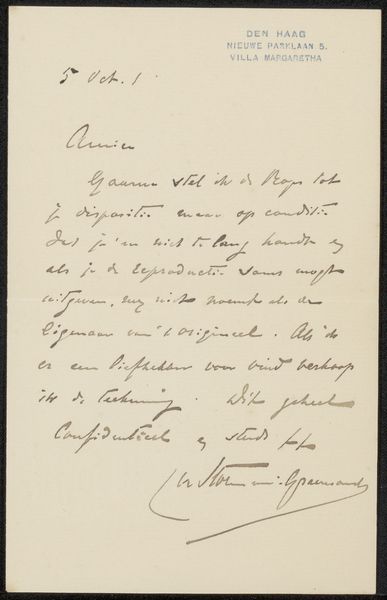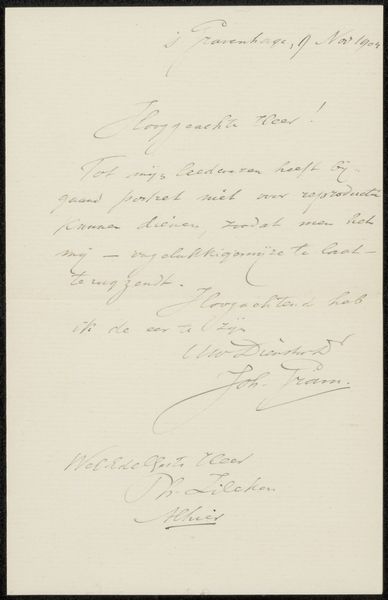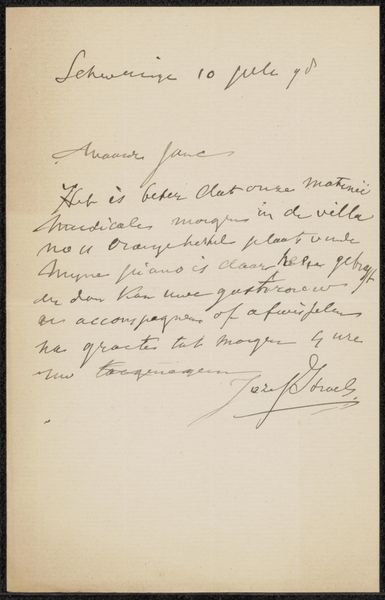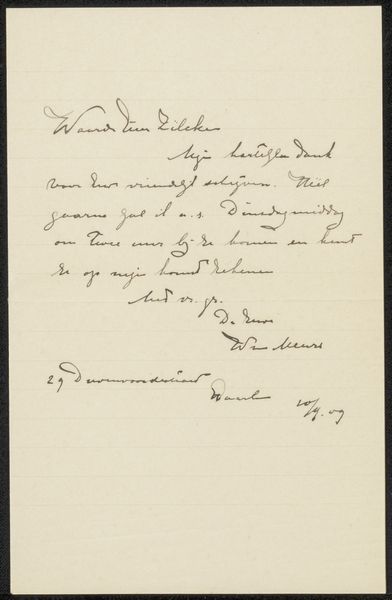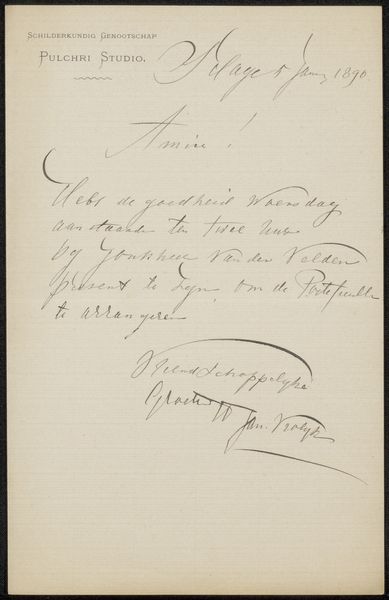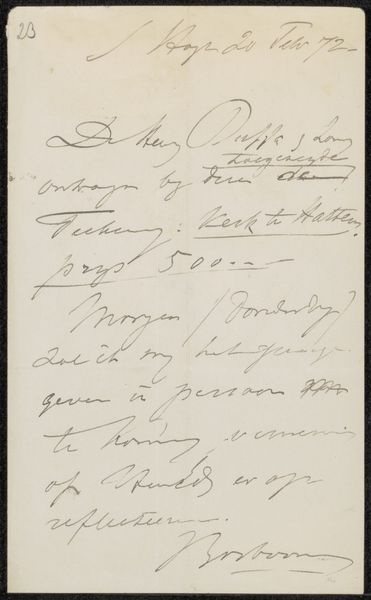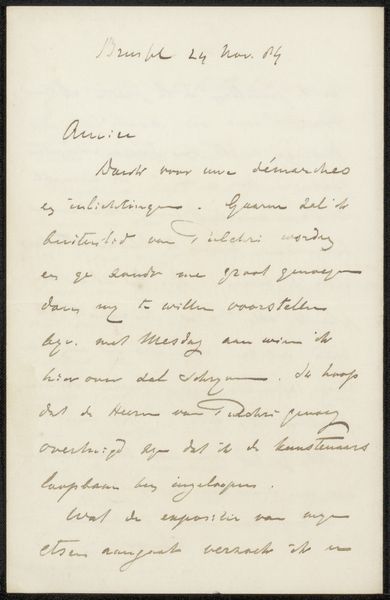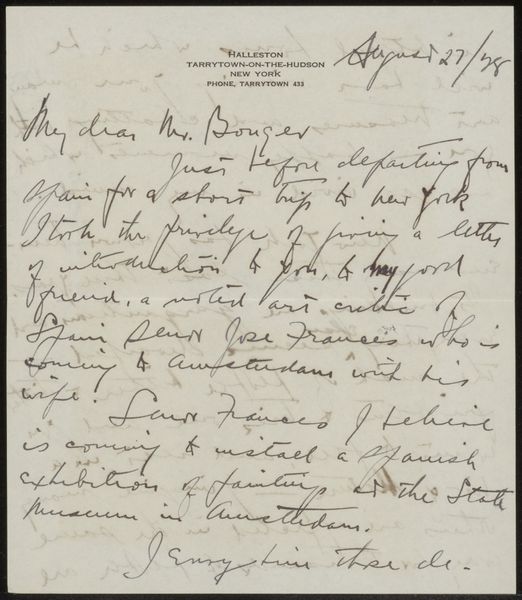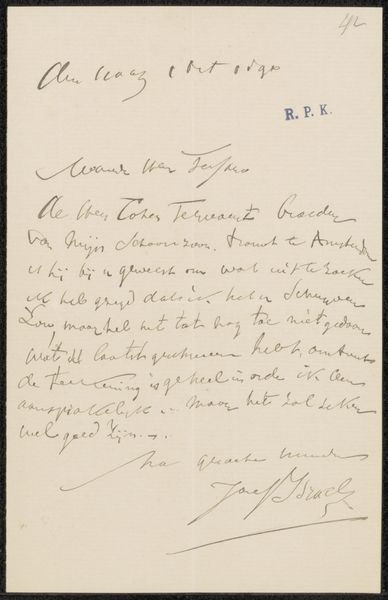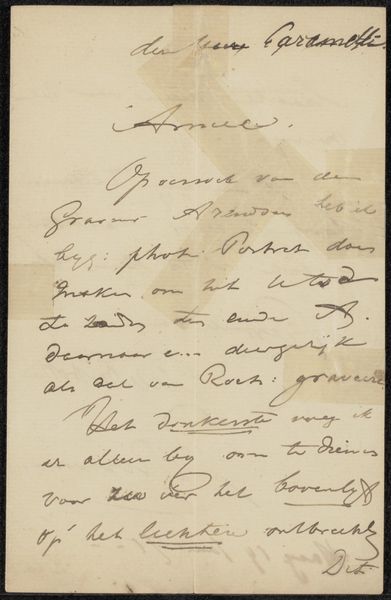
Briefkaart aan Philip Zilcken Possibly 1901 - 1905
0:00
0:00
carelnicolaasstormvansgravesande
Rijksmuseum
drawing, paper, ink, pen
#
drawing
#
paper
#
ink
#
pen
Copyright: Rijks Museum: Open Domain
Curator: Welcome. Today we're looking at "Briefkaart aan Philip Zilcken," a note drawn with pen and ink on paper, likely dating from the early 1900s, by Carel Nicolaas Storm van 's-Gravesande. It’s part of the Rijksmuseum’s collection. Editor: It has an intimate, almost ephemeral quality. The delicate script seems so personal; the off-white paper contributes to the sense of faded time and lost stories. The note fills the space of the paper almost hesitantly, but the handwriting appears quite assertive and sure. Curator: It is indeed. This seemingly simple note speaks volumes about artistic networks and hierarchies of the era. Zilcken was a prominent figure in the art world and an advocate for etching. We see here how artists cultivated connections and sought each other's approvals. This hints at the dynamics of power, recognition, and perhaps even anxieties that shape artistic careers. The address “Villa Margaretha” places the letter in a particular space, further anchoring our understanding. Editor: Looking closely, the text is about requesting Mellery’s ‘toestemming’, that’s ‘permission’ or ‘approval’ in modern Dutch. It suggests an inquiry regarding a list of his works or improved proofs related to images. Then it talks about work of Van Rops being in possession… I wonder, what these names carried then; were they seen as revolutionaries, rebels against classical art, or embraced as symbols of artistic and social progress? This feels more layered than a mere correspondence. Curator: Absolutely, there is more at play than just the explicit message on the note. Both Mellery and Félicien Rops are prominent figures in late 19th-century art and known for pushing boundaries. ‘Briefkaart aan Philip Zilcken’ speaks to the way networks of power shaped cultural narratives and solidified reputations. The context allows for a deeper examination of the art market's mechanics and its implications. Editor: The use of handwriting itself as a medium interests me. In a world saturated with print, the personal touch of ink conveys more than the semantic meaning of the words alone. Curator: And it's important to consider how something so informal as a note can offer a different kind of historical insight compared to official documents or grand masterpieces. Its casual nature may give way to a deeper understanding of an era's intellectual and cultural dynamics. Editor: Seeing the letter allows us to envision how these people really worked, their social dynamics, and how meaning accumulates in simple gestures across time. Curator: Indeed, it connects us to a moment in the past, shedding light on art historical discourse of the time. Editor: An evocative glimpse into the dynamics that shape artistic production, influence and historical canon.
Comments
No comments
Be the first to comment and join the conversation on the ultimate creative platform.
